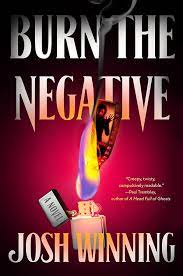For almost as long as Hollywood has existed, there have been stories about cursed movie productions. From the freaky weather that threatened to derail The Omen (1976), to the fires that ravaged the sets of The Exorcist (1973), to the tragic deaths of some the Poltergeist (1982) cast, stories of “haunted” films have become legendary. Sometimes, those stories are even more famous than the films themselves.
It’s a fantastically Hollywood phenomenon. Tinseltown is, after all, a place where stories come to life, and there’s something tantalizing about the idea that the filmmaking process can summon a kind of magical energy that spills into the real world, reshaping it in its own image — like when Freddy Krueger crosses over into “reality” in Wes Craven’s New Nightmare (1994).
If you want to find any kind of origin to the madness, you’ll have to go back to July 1924. That’s when Universal Pictures began constructing Stage 28 on its lot in Los Angeles. The 21,000 sq ft stage was built to house the enormous sets for The Phantom of the Opera (1925), including the extravagant opera house at the heart of the story. Tragedy struck when, during filming, an electrician fell from the catwalks above and died.
The set would go on to double for the Royal Albert Hall in Dracula (1931), and Stage 28 also housed Frankenstein’s laboratory for The Bride of Frankenstein (1935) and the Bates Motel for Psycho (1960). Workers routinely reported sightings of a ghost on the sound stage over the years before its demolition in 2014, although it’s telling that most claimed they saw the ghost of Lon Chaney, star of The Phantom of the Opera, rather than the unfortunate electrician who died.
Of course, the horror genre is overflowing with these stories. Now, the concept of a “haunted movie” is so well-known, it has become a PR angle itself. There will always be a filmmaker trying to convince you that weird things happened during the making of their horror movie. Everybody from Ti West (The Innkeepers) to James Wan (Insidious, The Conjuring) has talked about lights going off, strange feelings in certain rooms, and cast members waking up in the middle of the night, certain they’re not alone in their hotel room.
The stories I find most interesting are the ones that are harmlessly silly — such as the long-held belief that you can glimpse a ghost kid in Three Men and a Baby (1987) — and the stories that are pre-internet. Films such as Apocalypse Now (1979) and Fitzcarraldo (1982) already belong to another age, and their behind-the-scenes tales have become their own kind of ghost story, passed down through generations of horror fans who, like me, were raised by Blockbuster and Roger Ebert. Impossible to fact check. Chilling in their timelessness.
You probably know about The Wizard of Oz (1939) and the theory that a hanged “munchkin” can be glimpsed in the background of one scene (that one’s definitely fake, by the way). But that legend looks positively quaint next to a grisly subset of the cursed movie phenomenon that emerged in the ‘60s, ‘70s and ‘80s. Films like The Exorcist, The Omen and, in particular, Poltergeist, became renowned for their troubled productions, in which cast and crew members died in tragic circumstances.
On The Omen alone, there’s the story about Gregory Peck’s plane being struck by lightning, the stuntman who was attacked by Rottweilers for real, and the awful car wreck that claimed the lives of the special effects director and his assistant. Meanwhile, Poltergeist is famous for the deaths of its cast, including young Heather O’Rourke, who died from septic shock aged just 12.
Claims that these people fell victim to a “curse” can feel spectacularly tone deaf, and continued interest in the stories could be categorized as “ghoulish” at best, “bad taste” at worst. After all, real people lost their lives. What is interesting, though, is just why audiences want to believe an otherworldly force was responsible. Could it be that it gives them an explanation for the inexplicable? That it restores their sense of order and control in a chaotic world? It makes me think about that episode of Buffy the Vampire Slayer where Andrew (Tom Lenk) keeps making up stories in order to cope with a personal trauma. Human beings want nothing more than to feel in control.
Whatever the truth behind these stories, they provide a fascinating insight into Hollywood’s unnerving knack for self-mythologizing. Meanwhile, interest in them shows no sign of waning. An entire streaming series has been made on the topic (Cursed Films, available on Shudder), and books about cursed movie productions are on the rise — my own tip of the hat is Burn the Negative (Putnam), which is about a journalist who visits the set of a streaming horror series, only to discover that it’s a remake of the cursed 1993 horror film she starred in as a child. Naturally, it all then goes horrifically wrong.
For what it’s worth, my belief is that these stories function as an extension of the movies themselves — they prolong the movie experience and provide fans with something to pore and puzzle over, long after the credits have rolled. They keep the movie alive. That excited feeling of fear and unease only magnifies if we believe that, somehow, the horror films we love are living entities themselves, capable of reaching out and touching not only the real world, but us, too.
***
"Hollywood" - Google News
July 13, 2023 at 04:12PM
https://ift.tt/0onlSwO
The Most Haunted Movies in Hollywood History - CrimeReads
"Hollywood" - Google News
https://ift.tt/OytGPNE
Shoes Man Tutorial
Pos News Update
Meme Update
Korean Entertainment News
Japan News Update
Bagikan Berita Ini

















0 Response to "The Most Haunted Movies in Hollywood History - CrimeReads"
Post a Comment